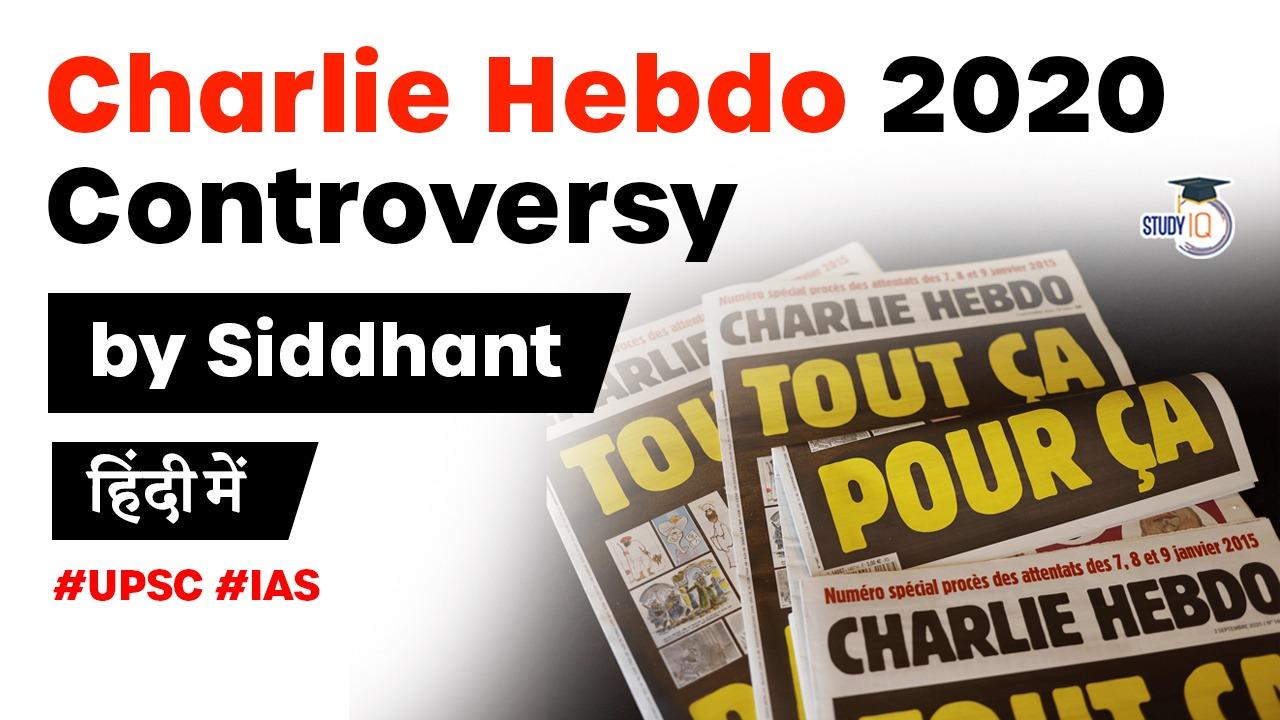Table of Contents
CHARLIE HEBDO
- Five years after Islamist terrorists stormed its offices in Paris and slaughtered 12 people and injured at least 11, the French satirical magazine Charlie Hebdo on Tuesday (September 1) republished controversial cartoons depicting the Prophet, which had provoked that attack.
- The caricatures were reprinted a day before the scheduled opening of the trial of 14 suspected accomplices who were accused of providing logistic and material support to the two terrorists.
Why did Charlie Hebdo republish the cartoons?
- Many believe that by republishing the cartoons a day before the landmark trial, the iconoclastic French publication sought to make a loud and defiant statement in support of free speech and expression.
- Some others have said that by its provocative action, Charlie Hebdo is needlessly reopening old wounds.
Charlie Hebdo has had a history of provocation.
- The cover of the latest edition of the magazine features all 12 cartoons, which were criticised around the world, and triggered violent protests in some Muslim countries.
- The cartoons were first published by the Danish newspaper Jyllands-Posten on September 30, 2005, and subsequently reprinted by Charlie Hebdo the following year.
- Jyllands-Posten claimed that the caricatures were meant to serve as a commentary on the culture of fear and self-censorship within the Danish media.
Charlie Hebdo has had a history of provocation.
- The cartoons were condemned by Muslim groups, which said they were blasphemous. They were also criticised strongly for furthering stereotypes about Muslims, and for unfairly branding them as terrorists.
- In the months that followed the publication of the cartoons in Jyllands-Posten and Charlie Hebdo, violent protests broke out across Asia and the Middle East. Religious leaders in Muslim countries called for a boycott of Danish goods.
- The editor-in-chief of the newspaper ultimately issued a lengthy apology for publishing the cartoons, which he said had caused “serious misunderstandings”.
What happened at the Charlie Hebdo office in 2015?
- The Kouachi brothers, French-born sons of Algerian immigrants, stormed the Charlie Hebdo office in Paris armed with Kalashnikov assault rifles, grenades and pistols.
- Among the 12 people they killed was then-editor Stéphane Charbonnier, the satirical caricaturist and journalist widely known as ‘Charb’.
- Police arrived at the scene just as the terrorists were leaving the building. Videos shot by journalists and others showed the attackers shooting at a police vehicle before driving off.
What has been the reaction to the magazine’s decision to republish the cartoons?
- Through its official Twitter handle, Pakistan’s Foreign Office on Monday condemned “in the strongest terms the decision by the French magazine, Charlie Hebdo, to re-publish (the) deeply offensive caricature of the Holy Prophet”.
- In this Jan. 14, 2015 file photo, flowers lay outside Charlie Hebdo headquarters in Paris (AP Photo/Jacques Brinon, File) Mohammed Moussaoui, president of the French Council of Muslim Worship (CFCM) urged people to ignore the cartoons
What will happen at the trial?
- Fourteen people — 13 men and one woman — who have been accused of providing the gunmen with weapons and logistical support at the time of the attacks will be put on trial on Wednesday.
- The trial was originally supposed to begin in March, but was postponed due to the coronavirus pandemic. It is now expected to last till November.
- French President Emmanuel Macron was quoted as saying on Tuesday that it was not his place to pass judgment on Charlie Hebdo’s decision to re-publish the cartoons.
Latest Burning Issues | Free PDF






















 WhatsApp
WhatsApp